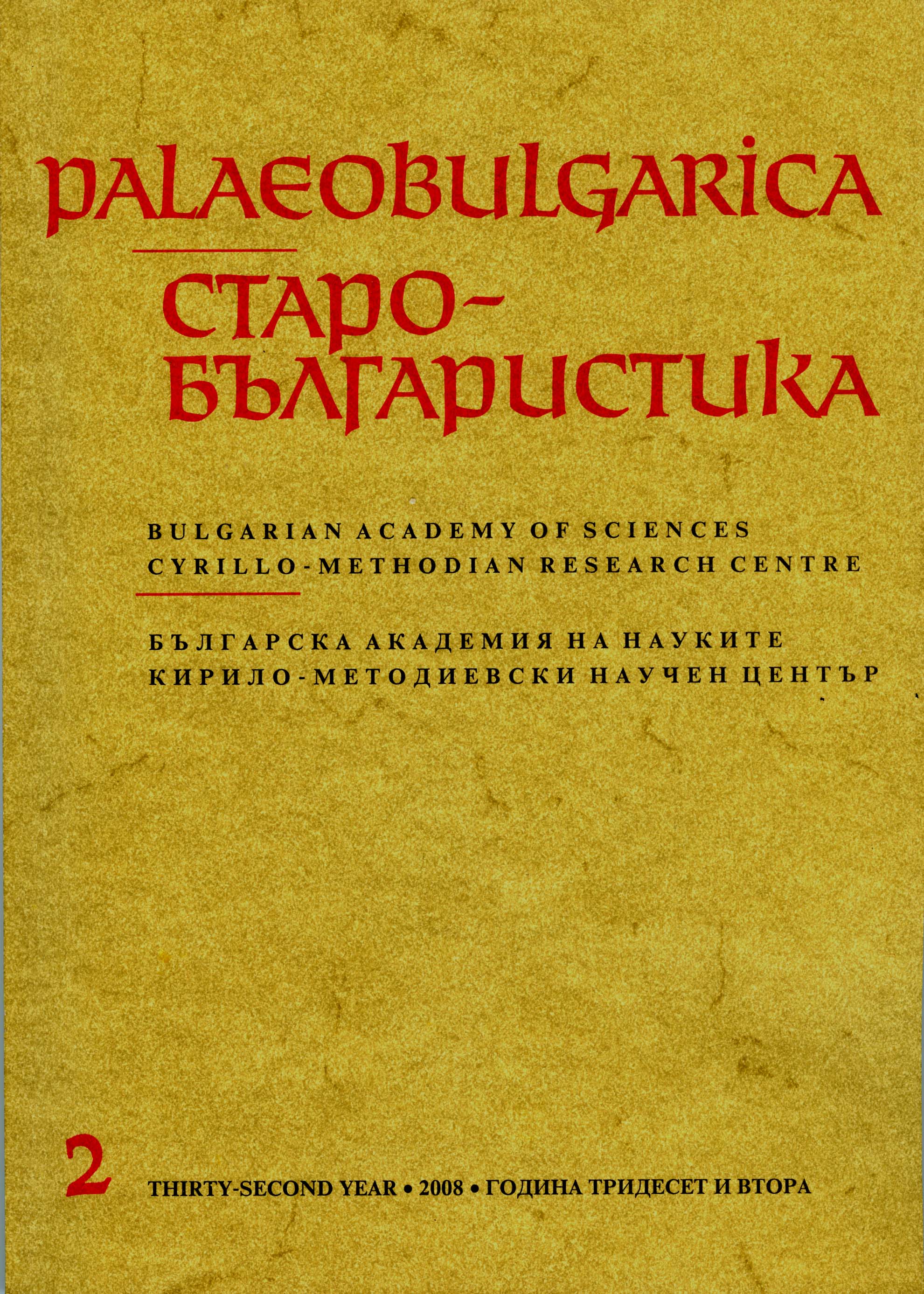Книгата на пророк Иеремия в български, сръбски и руски преписи от XIV-XVI в.
The Book of the Prophet Jeremiah in Bulgarian, Serbian and Russian Copies from the 14th to thel6th Centuries
Author(s): Tatyana MostrovaSubject(s): Language and Literature Studies, Middle Ages
Published by: Кирило-Методиевски научен център при Българска академия на науките
Summary/Abstract: The article presents characteristic structural and textological peculiarities of the Old Bulgarian translation of the Book of the Prophet Jeremiah with commentary. This is done on the basis of an analysis of 21 Middle Bulgarian, Serbian and Russian copies from the 14th to the 16th c. The article traces the dissemination of the Book of the Prophet Jeremiah in the Slavic mediaeval manuscript tradition as a thematic unit together with the Book of Lamentations, the Book of the Prophet Baruch, the Epistle of the Prophet Jeremiah and a brief vita of the same prophet. Some of the copies used in compiling the Gennadian Bible at the end of the 15th c. are described. The Preslav translation, which is not complete (ch. 25:13–45:5 and ch. 52 are missing), was inserted into the Gennadian Bible without major changes: the commentary was removed and the missing parts from the Book of the Prophet Jeremiah were supplied in a new Russian translation from Latin. This contaminated translation was disseminated in the Russian manuscript tradition from the 15th c. on and its earliest representative is the manuscript of 1492 from the Solovetskiy Monastery. The analysis of the structural peculiarities of the text shows the differences that exist: on the one hand between the Old Bulgarian and Old Russian traditions and the new contaminated translation from the end of the 15th c., and on the other hand between the Bulgarian tradition and both the Russian and Serbian traditions, differences that developed at an earlier stage, already before the beginning of the 15th c. What is characteristic of the Russian tradition is that it retains its most important peculiarities in comparison to the Middle Bulgarian tradition in the text markings and its variability as far as structure and text are concerned. With certain exceptions the Serbian copies follow the structural and textological peculiarities of the Russian texts. The Middle Bulgarian tradition on the other hand emerges as a separate text and shows the influence of partial redaction from the last quarter of the 14th c. Its impact is seen most clearly in the copy from the Suprasl Monastery (F19-48 in the library of the Lithuanian Academy of Sciences), a copy originating from South-Western Russia. Separate innovative variant readings are also transmitted in a group of Russian copies that are close to the antigraph of the Preslav translation inserted into the Gennadian Bible. Separate notes and glosses in the margins of Russian MSS from the end of the 15th c. are also evidence of links with Middle Bulgarian copies.
Journal: PALAEOBULGARICA / СТАРОБЪЛГАРИСТИКА
- Issue Year: 2008
- Issue No: 2
- Page Range: 59-82
- Page Count: 24
- Language: Bulgarian
- Content File-PDF

